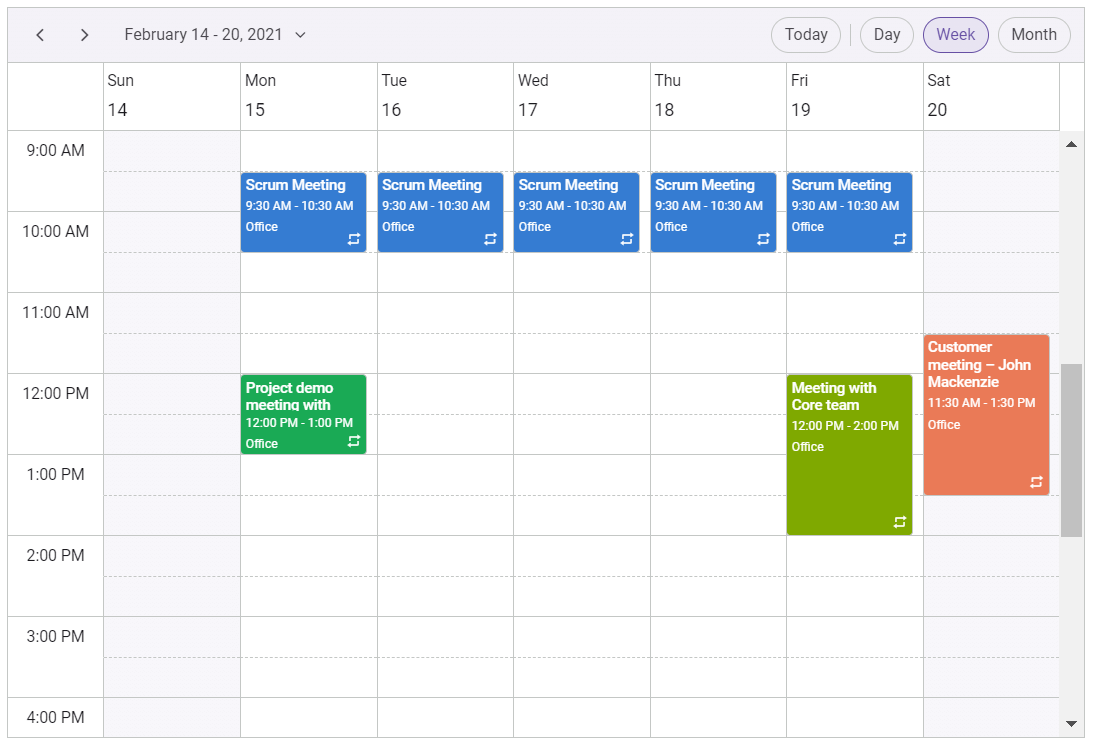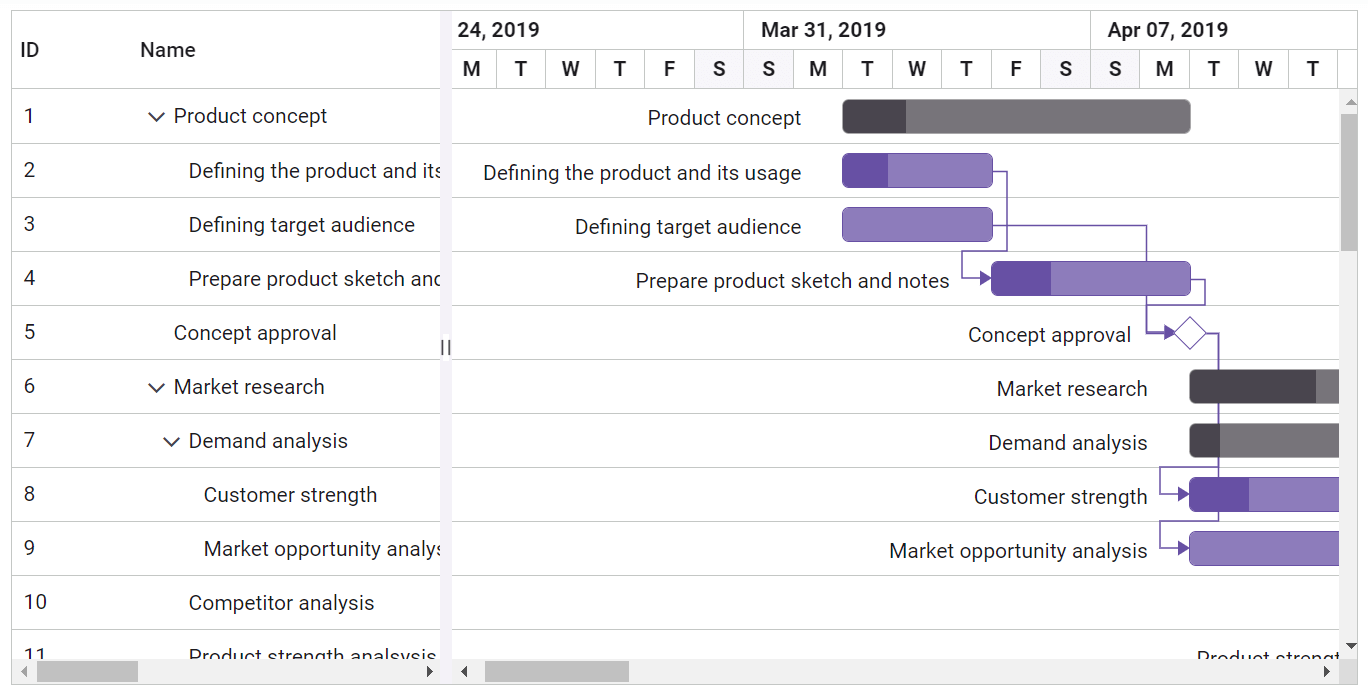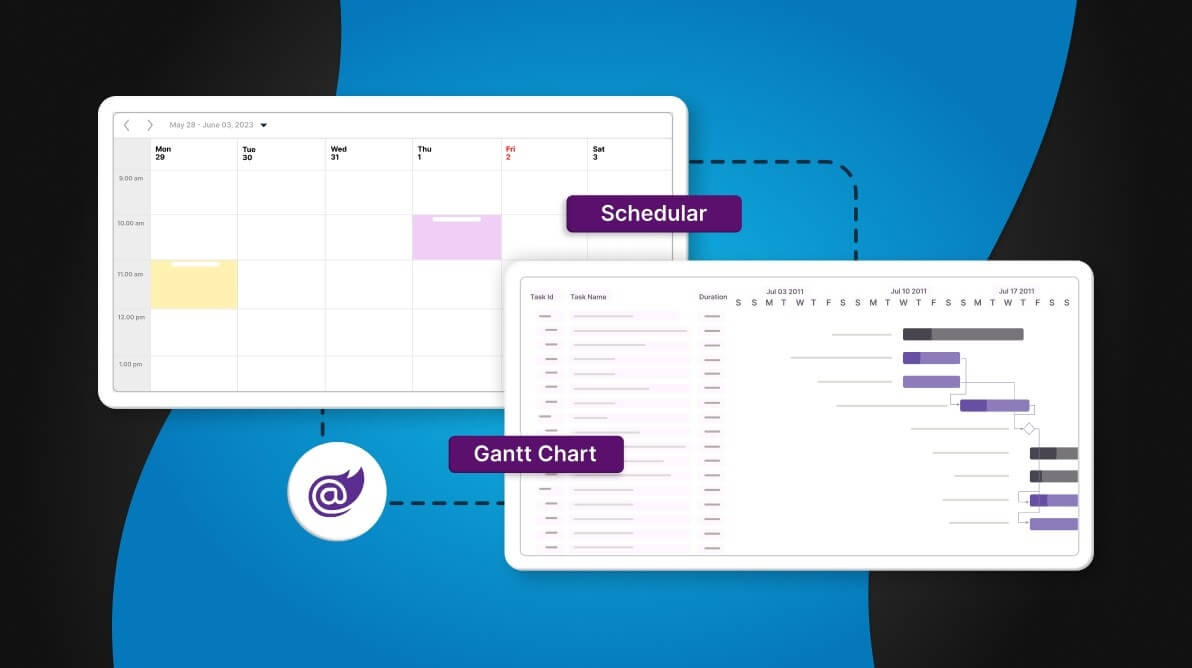TL;DR: Both the Scheduler and Gantt Chart are powerful tools for project management. The Scheduler is perfect for managing appointments and events, while the Gantt Chart is designed for tracking complex projects. Let’s dive into their core functionalities, shared features, and key differences to help you choose the right one for your project needs.
In today’s fast-paced digital world, developers often face the challenge of selecting the right visualization tool to manage and display time-related data.
This blog explores the key differences between a Scheduler and a Gantt Chart and offers insights into when to use each. We’ll also review how Syncfusion’s Blazor Scheduler and Gantt Chart components can enhance your app’s functionality and user experience.
Understanding the basics: Scheduler vs. Gantt Chart
Before diving into the specifics, let’s first understand the fundamental differences between a Scheduler and a Gantt Chart.
Scheduler
- A time-management tool that displays events or tasks in both calendar and timeline views.
- Allows users to view, create, edit, and delete appointments or events across various time slots.
- Ideal for scheduling and managing appointments, meetings, or events.

Gantt Chart
- A project management tool that visualizes tasks, their dependencies, durations, and progress over a timeline.
- Provides a comprehensive view of project timelines, task relationships, and resource allocations.
- Best suited for project planning, tracking, and resource management.

Choosing between a Scheduler and a Gantt Chart
Now that we’ve covered the basics! Let’s explore scenarios where each component shines:
| Scheduler | Gantt Chart |
When to use |
|
|
Key differences |
|
|
Use case scenarios |
|
|
Syncfusion Blazor Scheduler and Gantt Chart
Syncfusion, a leading provider of UI component libraries, offers powerful Scheduler and Gantt Chart components explicitly designed for Blazor apps.
| Syncfusion Blazor Scheduler | Syncfusion Blazor Gantt Chart |
Introduction | The Syncfusion Blazor Scheduler component provides an intuitive and feature-rich view for managing appointments and events.
| The Syncfusion Blazor Gantt Chart component offers a comprehensive project management solution with task hierarchy, dependencies, and resource allocation. |
Key features |
|
|
Use case | Ideal for building robust scheduling apps. | Perfect for creating visually appealing project management tools. |
Common functionalities between Syncfusion Blazor Scheduler and Gantt Chart
Timeline view
- Both Syncfusion Blazor Scheduler and Gantt Chart components offer a timeline view to visualize events or tasks over a specific period. This view is crucial for tracking time-bound activities.
Resource management
- Both components can manage and display resources. In a Scheduler, this might be meeting rooms or personnel, while in a Gantt Chart, it could be project resources like team members or equipment.
Drag-and-drop support
- Users can interact with both Scheduler and Gantt Chart through drag-and-drop functionality. This feature allows for the easy rescheduling of events or tasks by simply dragging them to a new time slot.

Syncfusion Blazor components can be transformed into stunning and efficient web apps.
Conclusion
Thanks for reading this blog. We conclude that choosing between a Scheduler and a Gantt Chart depends on your app’s specific requirements. The Scheduler is ideal for managing appointments and events, while the Gantt Chart excels in project management and task-tracking scenarios. With these components, developers can leverage powerful features and seamless integration to create robust, user-friendly apps tailored to their needs.
If you’re already a Syncfusion user, the latest version of Essential Studio® is available on the support forum, support portal, or feedback portal. We’re always here to help you!






